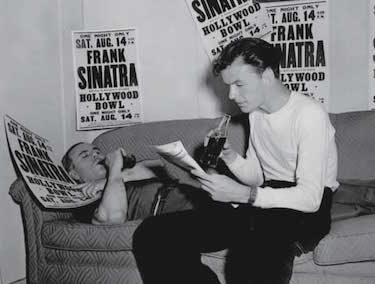 Of all casino attractions, none holds quite the allure of counting cards in blackjack, with some seeing it as a chance to beat the House at its own game by employing a little “skill”. Popular culture is infested with movies such as Rain Man and 21, detailing exploits of math masters and the legendary MIT Counting Team, showing how to take hundreds of thousands of dollars out of Las Vegas coffers. Of course, most movies forget to mention operators went to court to ban “overly-lucky” players and happily escorted them off the premises once caught, a lifetime ban bestowed as a souvenir.
Of all casino attractions, none holds quite the allure of counting cards in blackjack, with some seeing it as a chance to beat the House at its own game by employing a little “skill”. Popular culture is infested with movies such as Rain Man and 21, detailing exploits of math masters and the legendary MIT Counting Team, showing how to take hundreds of thousands of dollars out of Las Vegas coffers. Of course, most movies forget to mention operators went to court to ban “overly-lucky” players and happily escorted them off the premises once caught, a lifetime ban bestowed as a souvenir.
Depending on who’s asked, tallying what’s revealed may be the best way to win at blackjack, but with pretty much every place using multiple shoes these days, it’s near impossible to profit like pioneers. That said, it’s constructive to examine how it works to expand general understanding of the game.
The Truth about Blackjack Card Counting
Original card counting systems were introduced by Edward O. Thorp in his 1966 classic book, Beat the Dealer, and in excess of 700,000 copies were sold to gamblers looking to gain an advantage. By approaching standard blackjack with readily available and easily-learned basic strategy, House edge is only 0.50%, almost top odds found. However, when applying computation techniques, participants can reverse those numbers, perhaps slightly more.
That means for every 100 decisions, they’ll make one extra correct choice than decent players. To realize that superiority, individuals must learn procedures, execute them in crowded, fast-paced environments, and in a manner that doesn’t attract pit boss suspicion.
Commonly, basic strategy is simply employed while waiting for decks to finally become favourable. Don’t underestimate the process as it takes hundreds of hours of table experience to ensure that 1% benefit pays off. After all, if it was an easy path to wealth, people would be lined up out the door.
How Card Counting Works
Card counting is based on a fundamental premise, 10s and Aces are preferable for customers and small ones less than 5 favor dealers. By watching everything distributed and assigning values (+1 for high cards and -1 for low), a running tally is kept throughout the round. When especially rich in 10s and Aces, bets are raised until it “cools off” and balance is restored.
Coordinated teams may work via members signalling a “high roller” to exceptionally rich shoes. They’ll buy into the game, place maximum stakes until it cools, collect chips and wait for the next opportunity. Therefore, two telltale signs pit supervisors always look for are fluctuations in ante amounts and joining tables, and if suspected, they could direct a re-shuffle mid-shoe to negate any potential advantages.
Why Do High Cards Help Players in Blackjack?
Recognizing when a 10 will more frequently appear favours players in the following situations:
- Blackjack – While 21s become more likely for both hosts and guests, it pays visitors at 3:2.
- Dealer Busts – As dealers are obliged to hit on hands between 12 and 16, and sometimes 17, the greater chance of high cards arriving dictates risking supplementary chips. Alternatively, shoes rich in 10s encourage clients stand on 12 to 16 in hopes of a bust.
- Doubling – Double-downs hold higher odds of getting closer to 21 if the single card drawn is more likely to be a 10 value.
- Insurance – Shoes rich in 10s transform a 2:1 Insurance wager from a bad percentage action into a good one. When utilizing six decks, odds of dealer blackjacks with an Ace exposed are 30.87%, lower than the break-even point of 33.33%. However, since probability rises above 1 in 3 for 10-rich hands, staking Insurance is wise.
As evidenced, knowing how many high cards are left consistently provides an edge, yet it’s never known how long improved odds can be feasted on before caught.
What Happens When Card Counters Are Caught?
To confirm, card counting is completely legal because it doesn’t change results in any way. Proven when Atlantic City took to courts in an effort to ban them in the 1980s and lost.
If accused, pit bosses normally inform them their presence is no longer welcome. No displays of authority or threats are made that would scare off others seated (regardless of what Robert DeNiro did in Casino), as horrified patrons are bad for business.
Those caught are usually asked to leave the premisses and probably blacklisted
, not allowed to return. Not much of a deterrent in a city the size of Las Vegas, although if living somewhere with few establishments, options quickly disappear.
How Much Do Casinos Hate Card Counters?
Obviously, casinos aren’t encouraging participation of experts possessing advantages, but consider these scenarios:
1 – Many who think they can count cards aren’t truly competent. Consequently, while attempting to accomplish mental gymnastics they might forget about elementary principles and actually end up losing.
2 – Occasional big wins make tables appear “hot” and lure less-skilled customers, resulting in overall profits for the House due to sloppy decisions of new arrivals.
3 – It requires a tremendous amount of effort to spot perpetrators and these resources are better spent elsewhere.
To recap, card counting is legal and it does provide real player gains, although none overly lucrative. It’s not necessary to be a math genius to perform, nevertheless, increased revenues aren’t realized without first spending hundreds of hours mastering technique.
When attempting to implement, expect heavy scrutiny from the House and a constant threat of permanent dismissal. Ultimately, once hands are dealt, everyone has to decide for themselves if it’s worth it.
